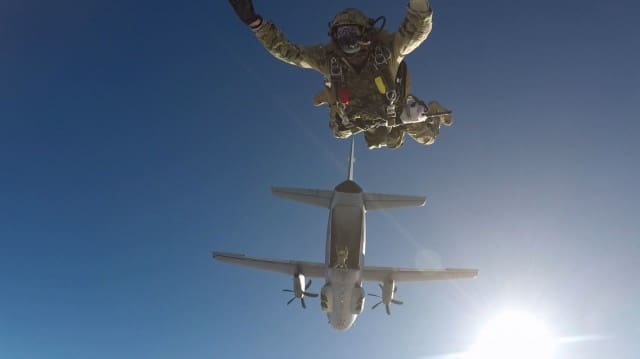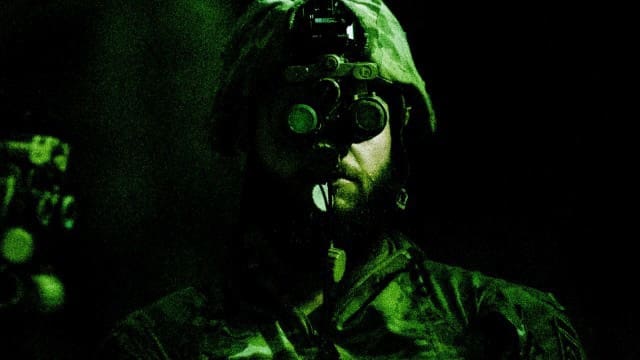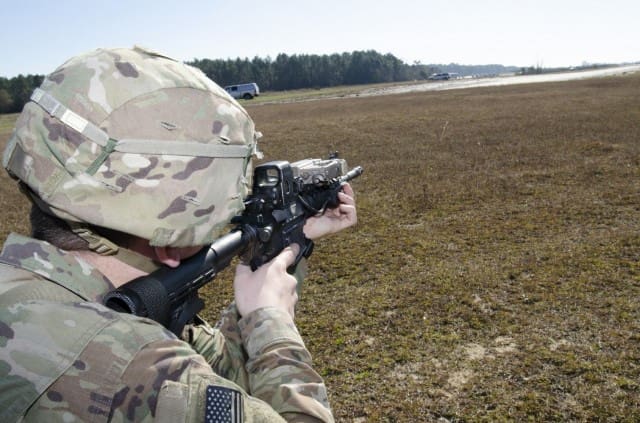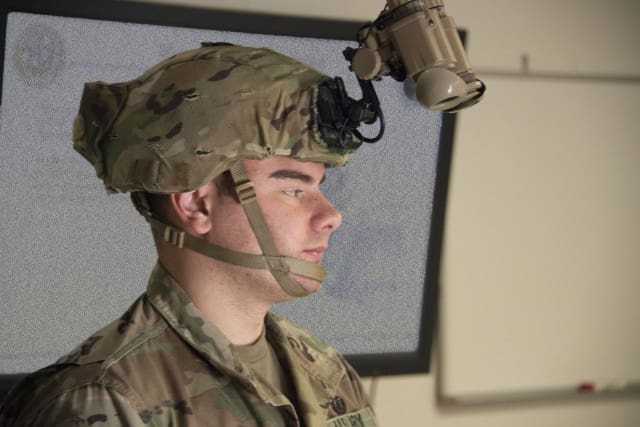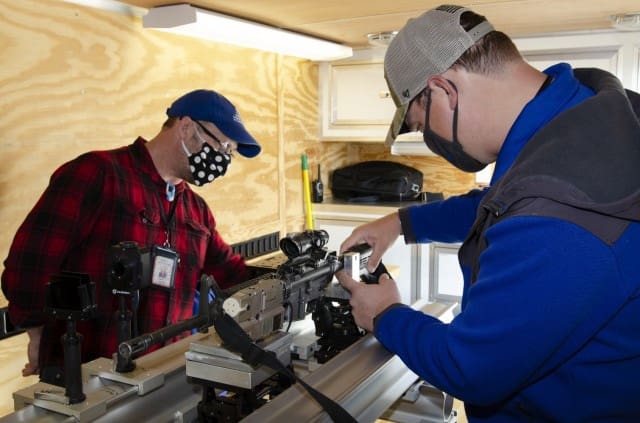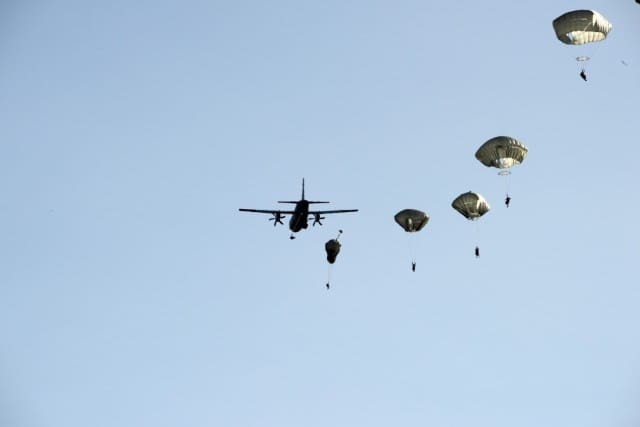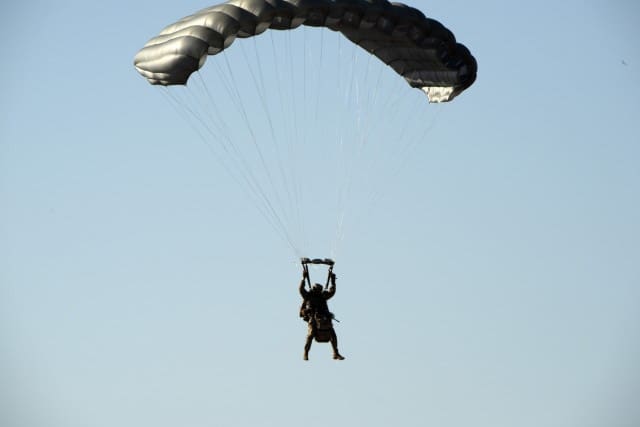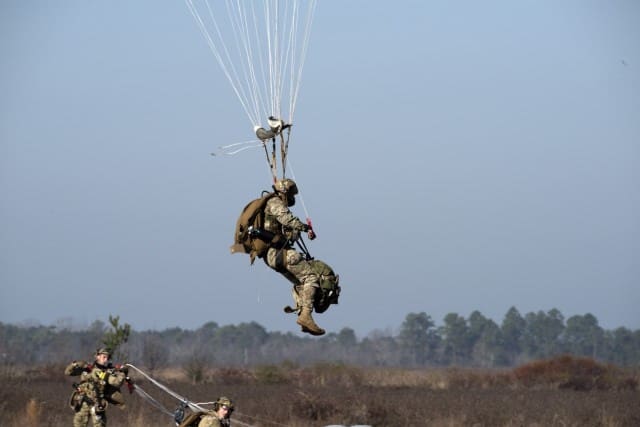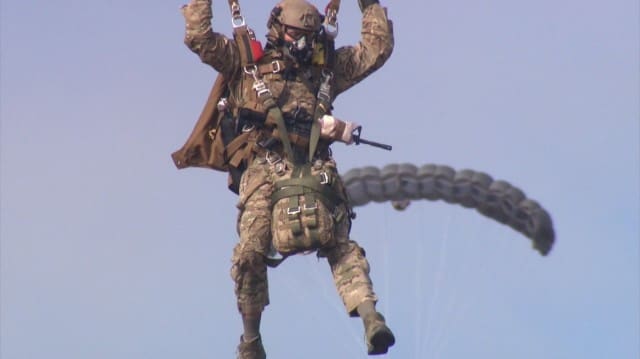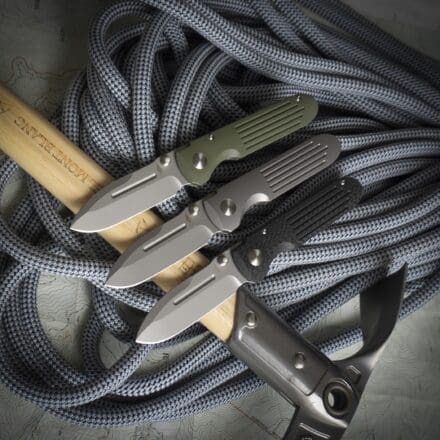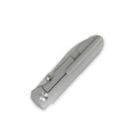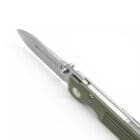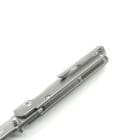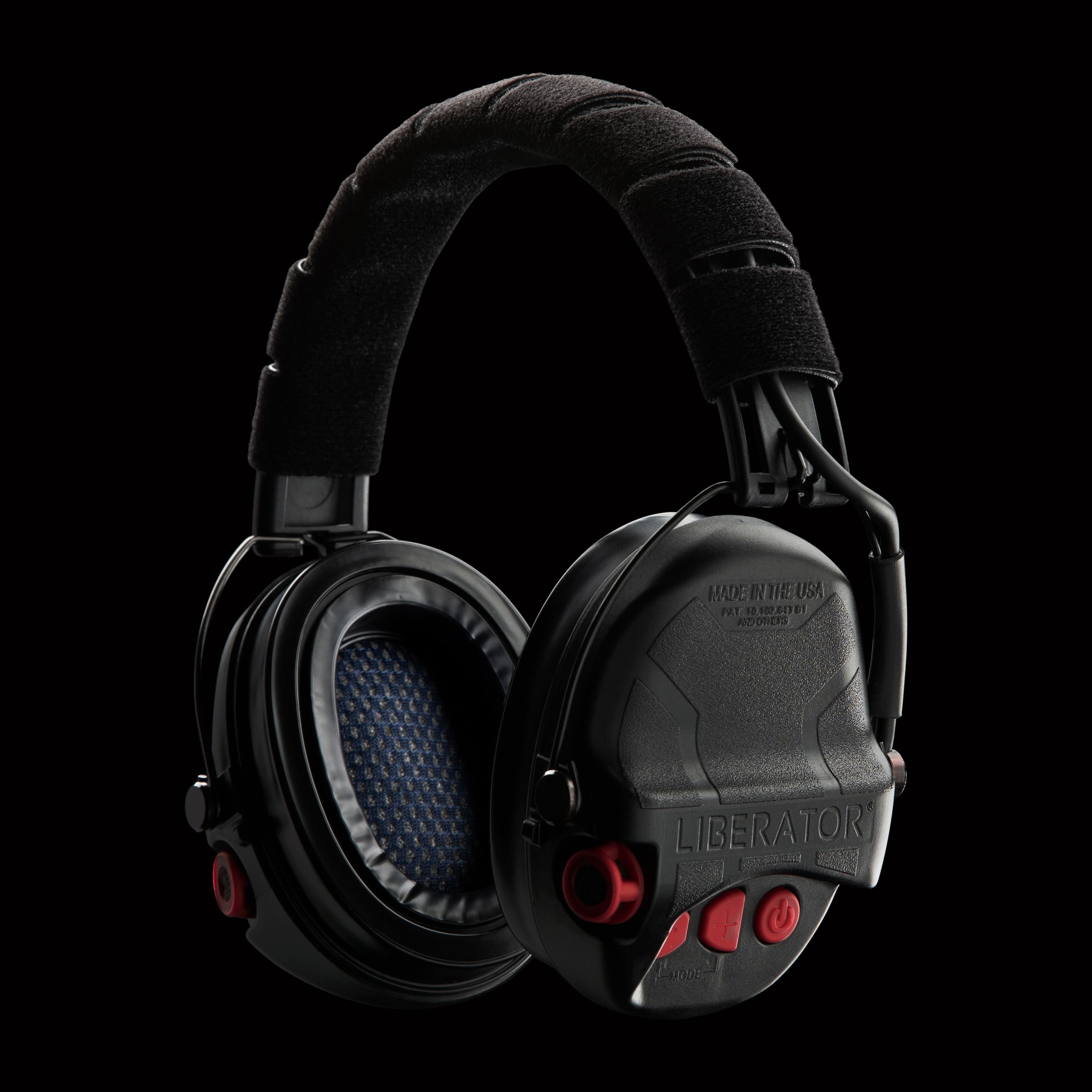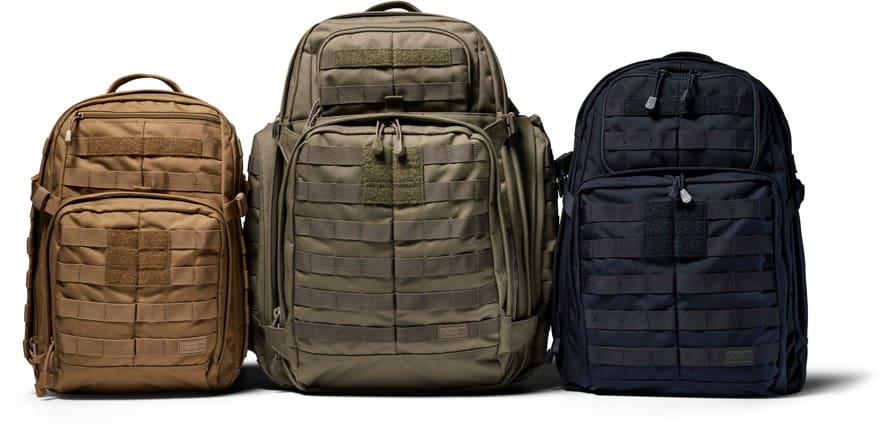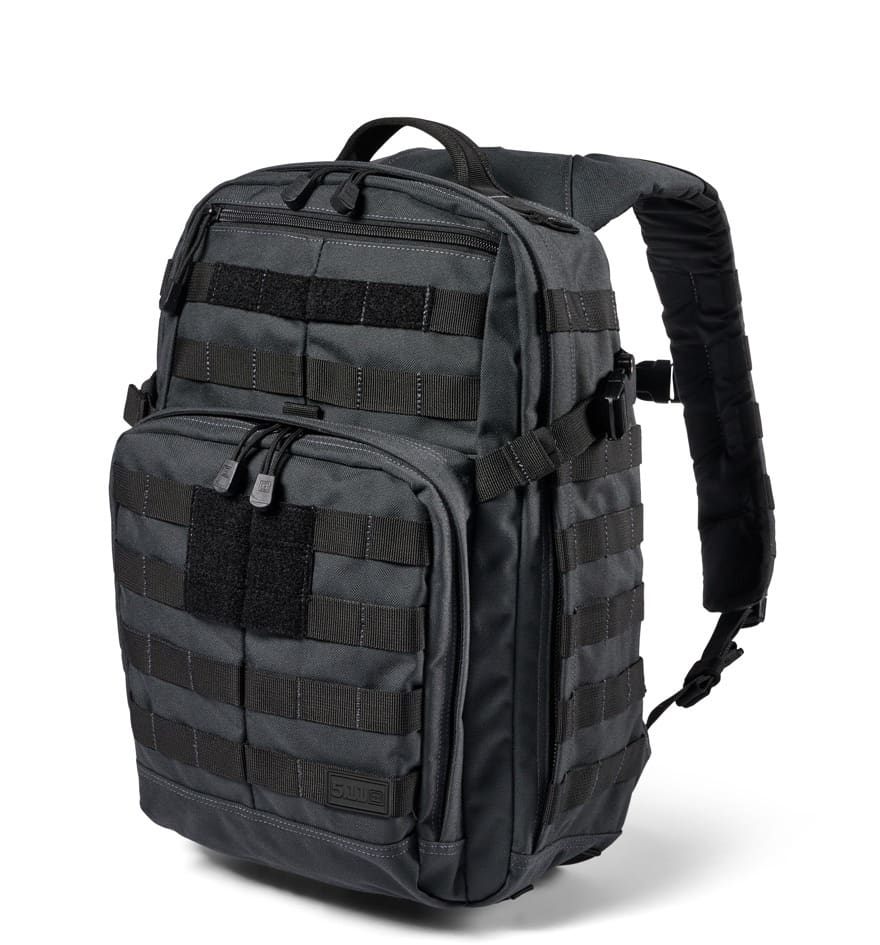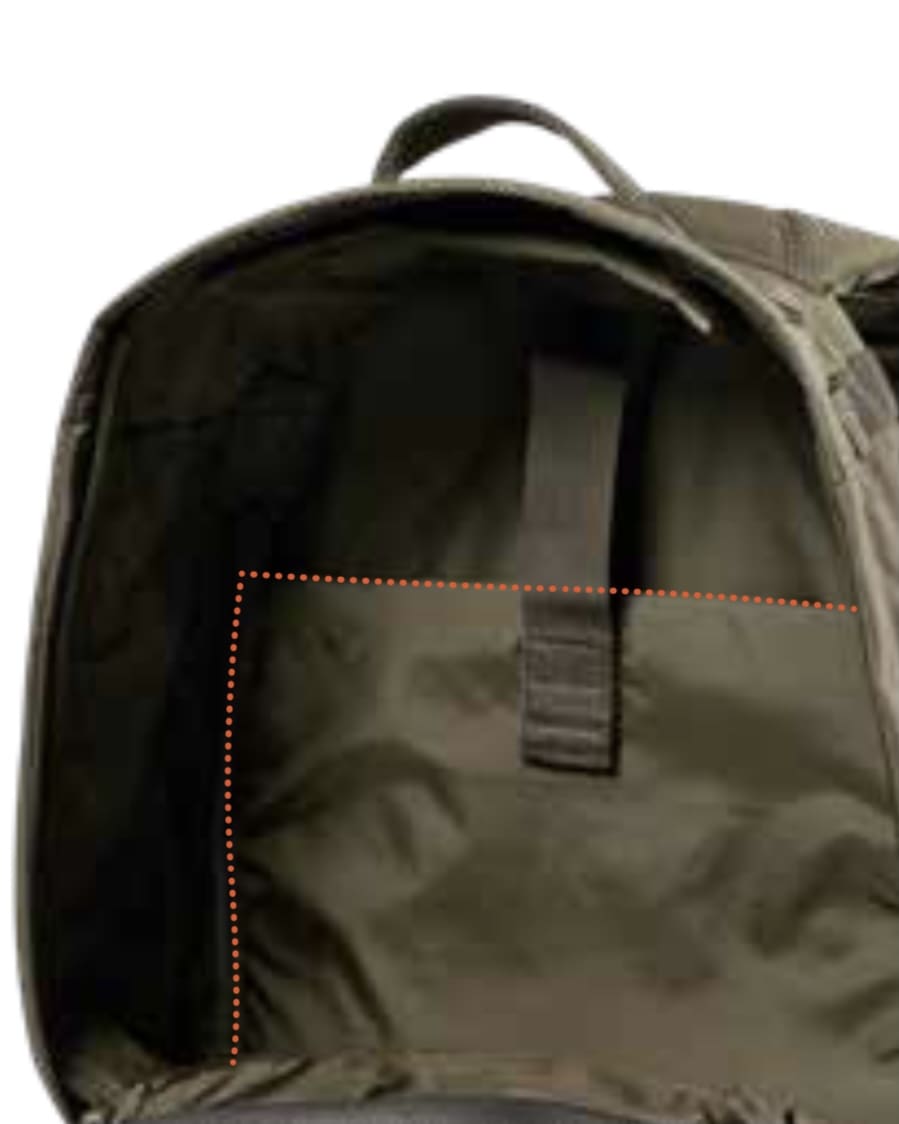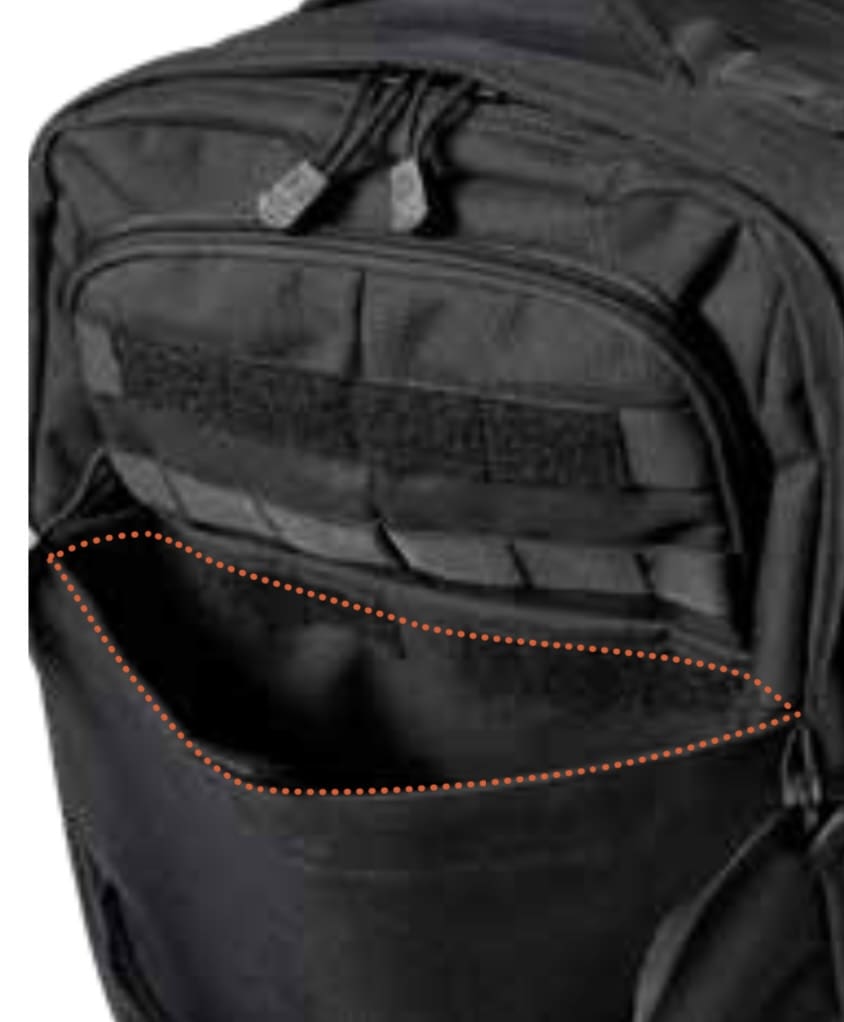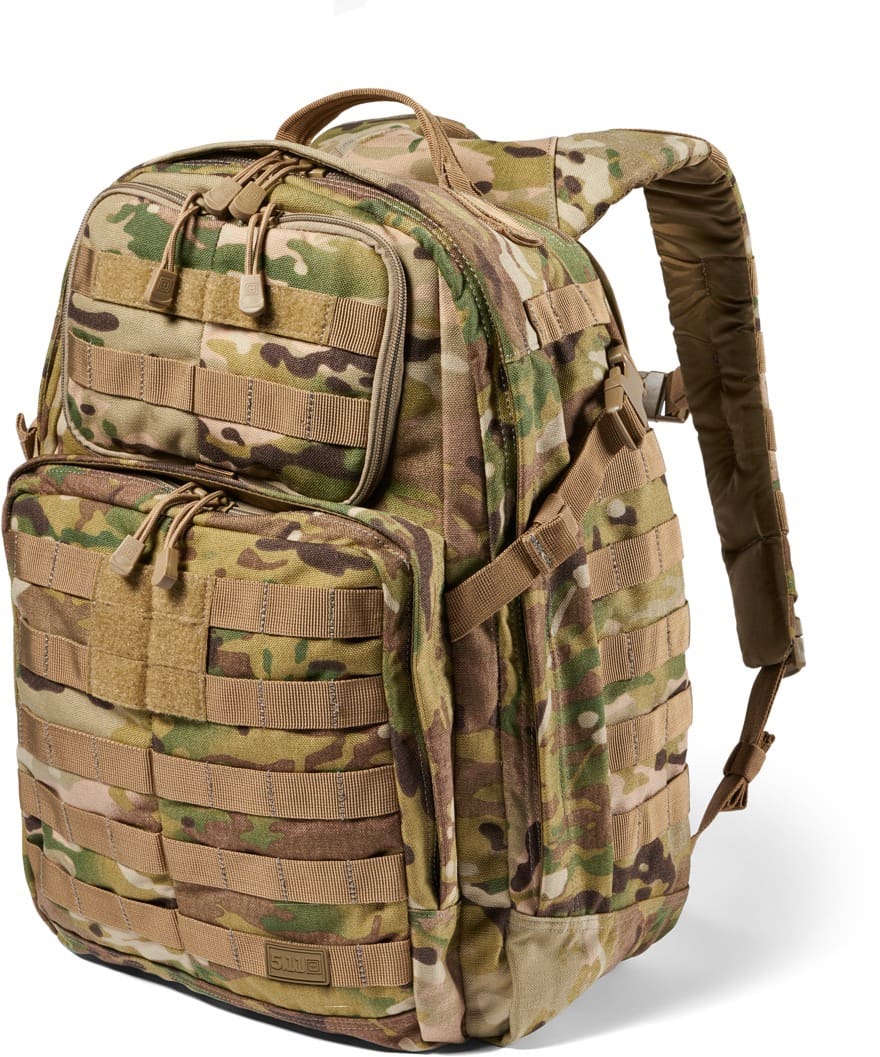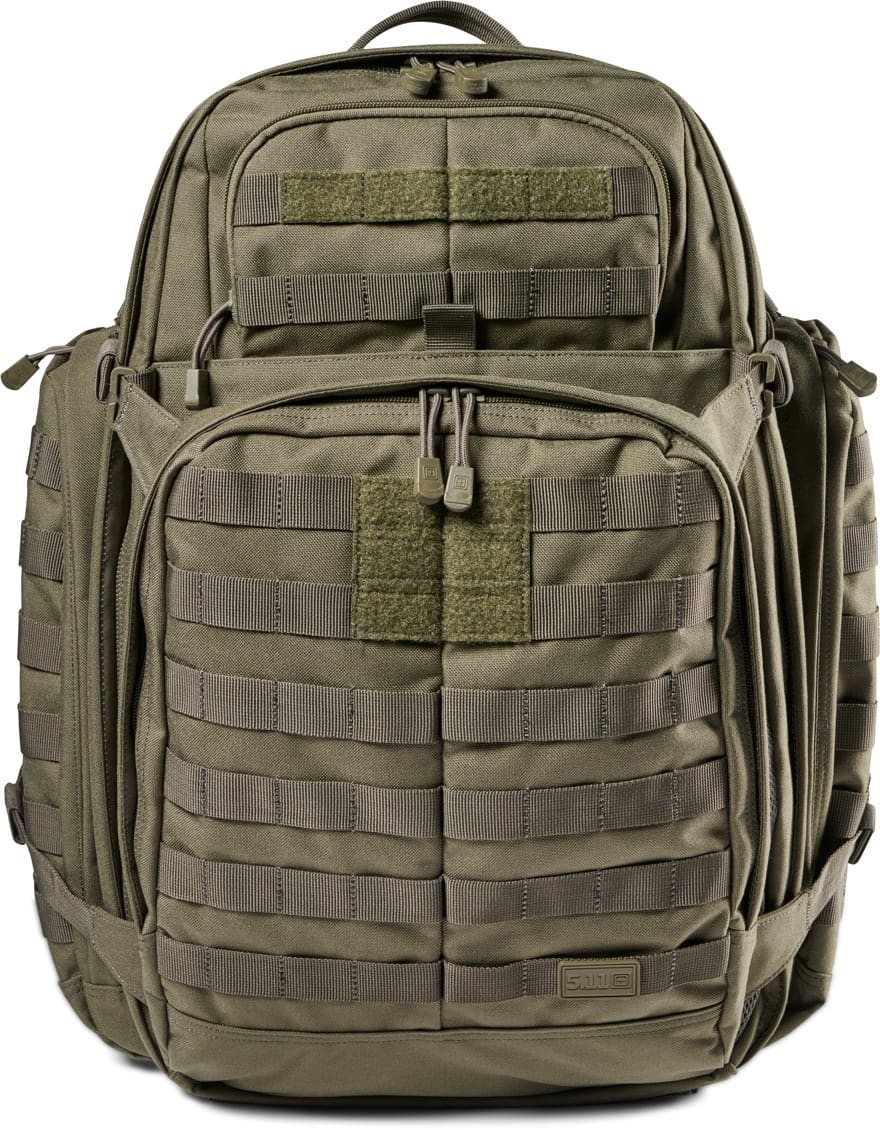Last month SIG Ammunition delivered 825,000 rounds of their composite cased 6.8x51mm ammunition to the US Army for Prototype Test #2 of the Next Generation Squad Weapons program. This is in addition to earlier deliveries as part of the program as well as ammunition used for in-house development and testing. All told, I’d estimate they’re approaching over one million rounds of next generation hybrid cased ammunition.
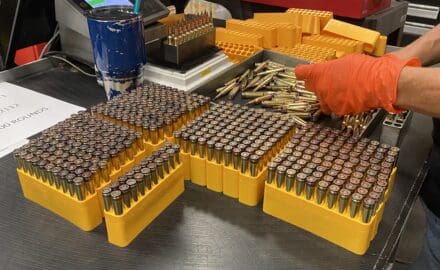
The NGSW program will replace the 5.56mm M4 Carbine and M249 Squad Automatic Weapon with a new Rifle and Automatic Rifle at the squad level in close combat formations like infantry and cavalry scouts. The other services are monitoring the program as well to decide if they want to participate.
In addition to the ammunition, NGSW-AR lightweight machine guns, and NGSW-R rifles mentioned above, the program also includes suppressors. Additionally, they are working on a dedicated Fire Control system with other vendor teams.
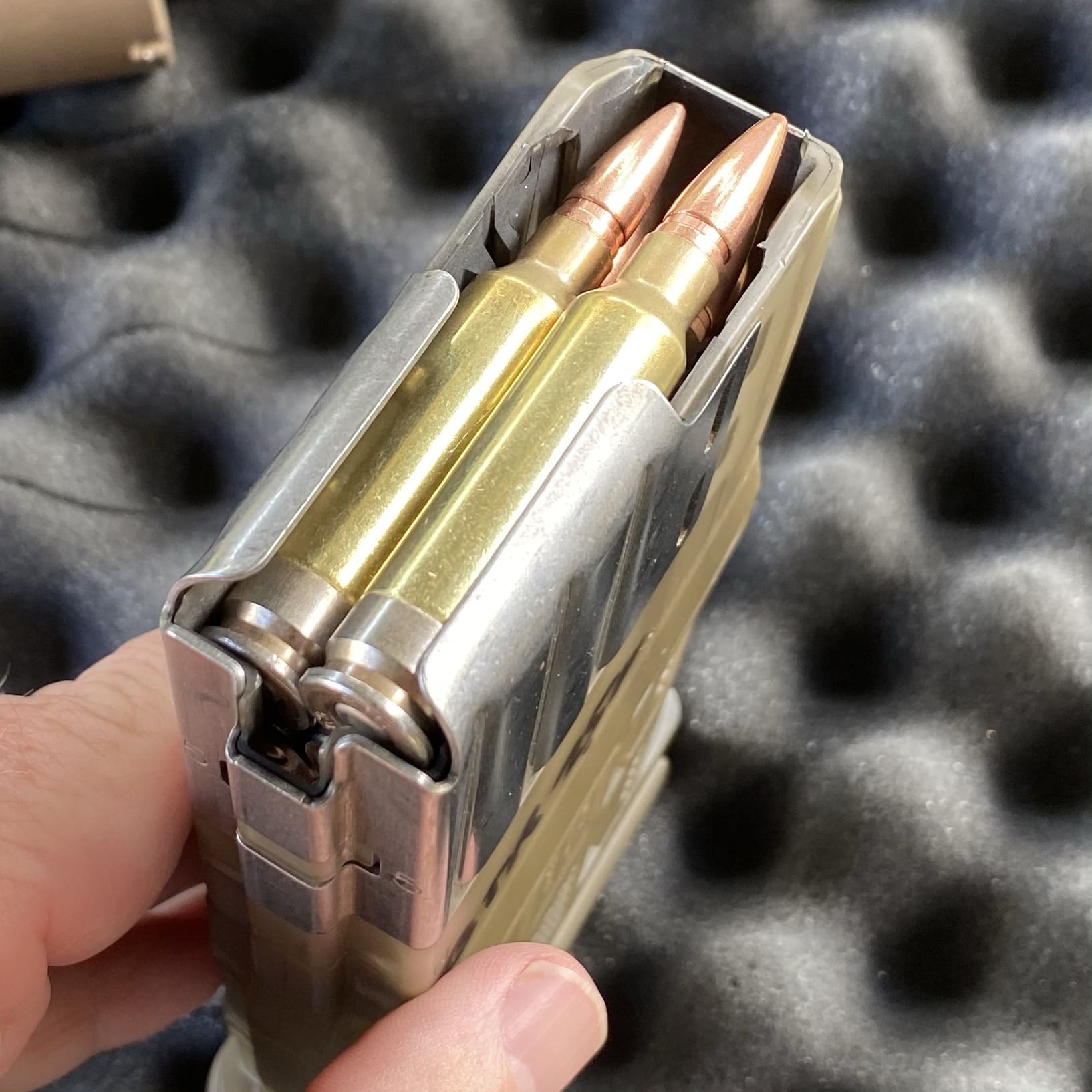
At the heart of this program is the ammunition. The Army gave industry a 6.8mm projectile and a performance specification, but left it up to them on how to best deliver that projectile within the required performance parameters.
Turns out, that performance they are seeking is similar to 270 Win Short Mag. The velocities required to achieve the desired effects for that 6.8mm projectile on target call for extremely high chamber pressures in excess of 80,000 psi; previously unheard of for small arms.
As if it wasn’t enough that the ammunition is a larger caliber than what it is replacing, it has to be at least 20% lighter as well. The SIG ammunition hybrid design beats that goal at 23.5% lighter than the weight of an equivalent energy cartridge (270 WSM). Below, you can see the hybrid case next to conventional all brass cased ammunition.
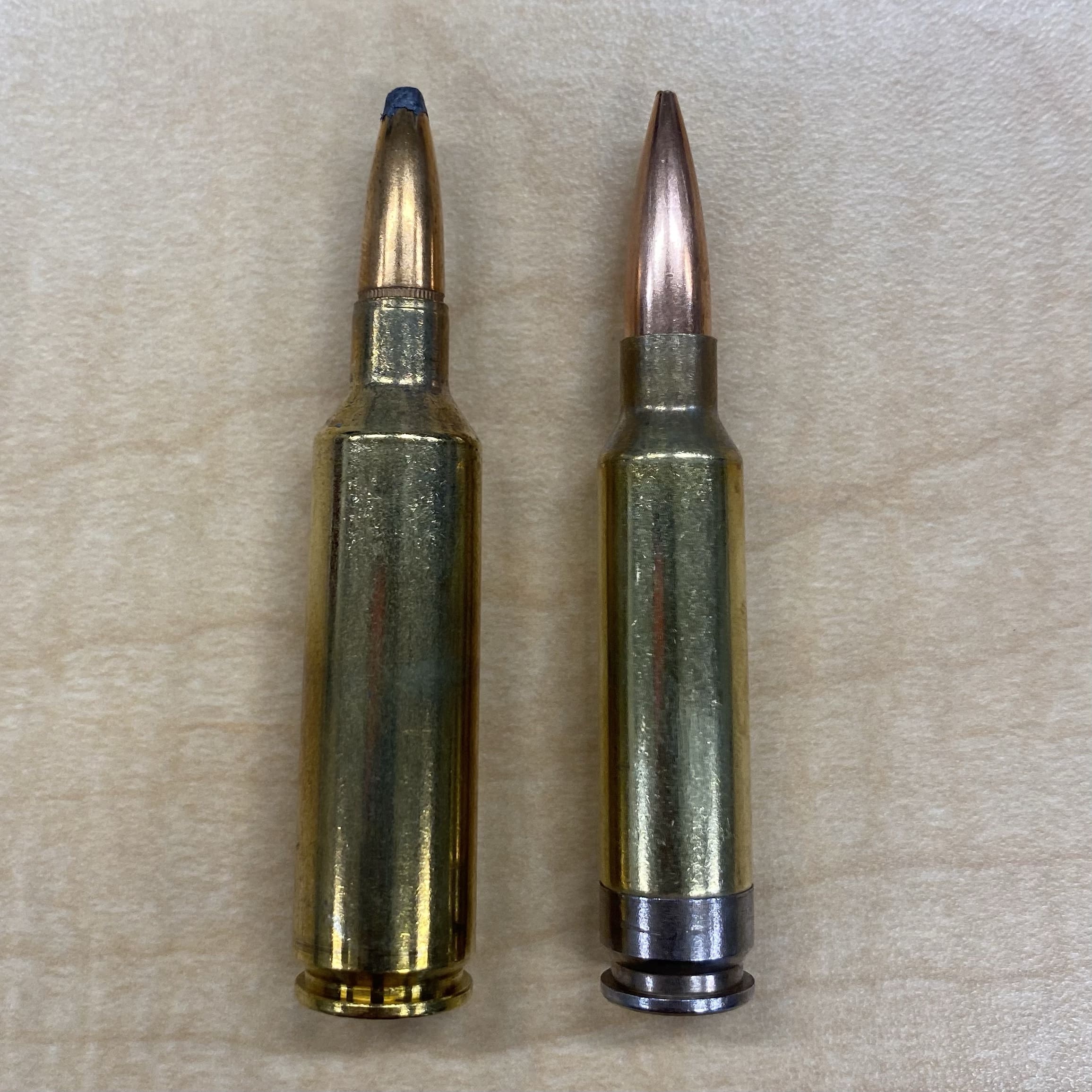
This is no science project. The Army plans to pick a solution by next year. While the engineering alone is daunting, industry has to also be able to actually manufacture the ammunition and weapons they’ve designed, in the event they are selected.
NGSW Candidates
The requirement has led to some interesting solutions. From an opening crowd of 16 industry teams offering various solutions, the Army narrowed it down to just three: SIG SAUER with their own hybrid cased ammunition consisting of brass body and steel head; General Dynamics-OTS teamed with True Velocity to introduce a recyclable polymer cased cartridge; and Textron Systems using a Case Telescoped cartridge which features a polymer case that completely encases the projectile and propellant, resembling a rimless shotgun shell. This slide depicts all of the candidate systems.
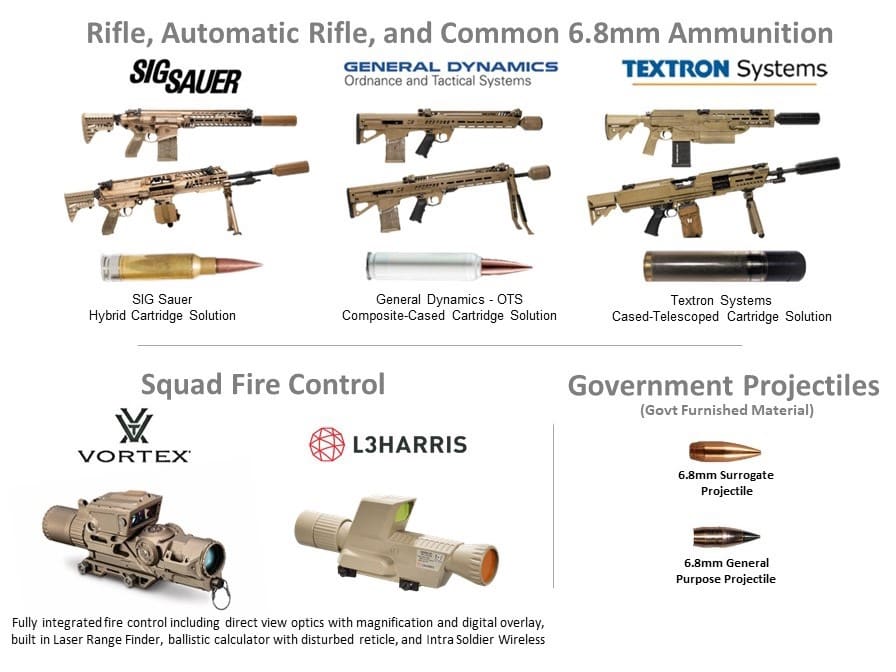
SIG’s Hybrid Case Ammunition Solution
SIG has been producing this ammunition in their Jacksonville, Arkansas factory. Last Fall, I had the opportunity to check out their operation. During the tour I witnessed manufacturing of commercial ammunition as well as the .300 WinMag ammunition under contract for the US Army and the new composite case rounds in 6.8x51mm for the NGSW program.
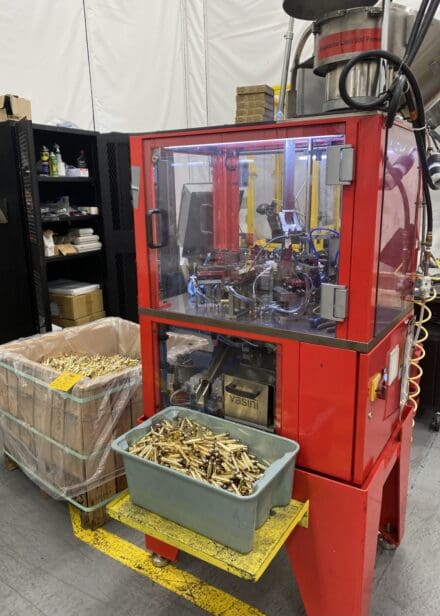
I’ll highlight their process for manufacturing the composite case at the time of my visit. Over time, it may change slightly due to regular upgrades in both processes and machinery. For example, when the cartridge case was first created, SIG used a three-piece design which included an internal aluminum lock washer to hold the head and case together. In the cutaway below you can see the washer in the three-piece design. Since then, they’ve refined it to a two-piece design which streamlines manufacturing and also saves even more weight and cost.
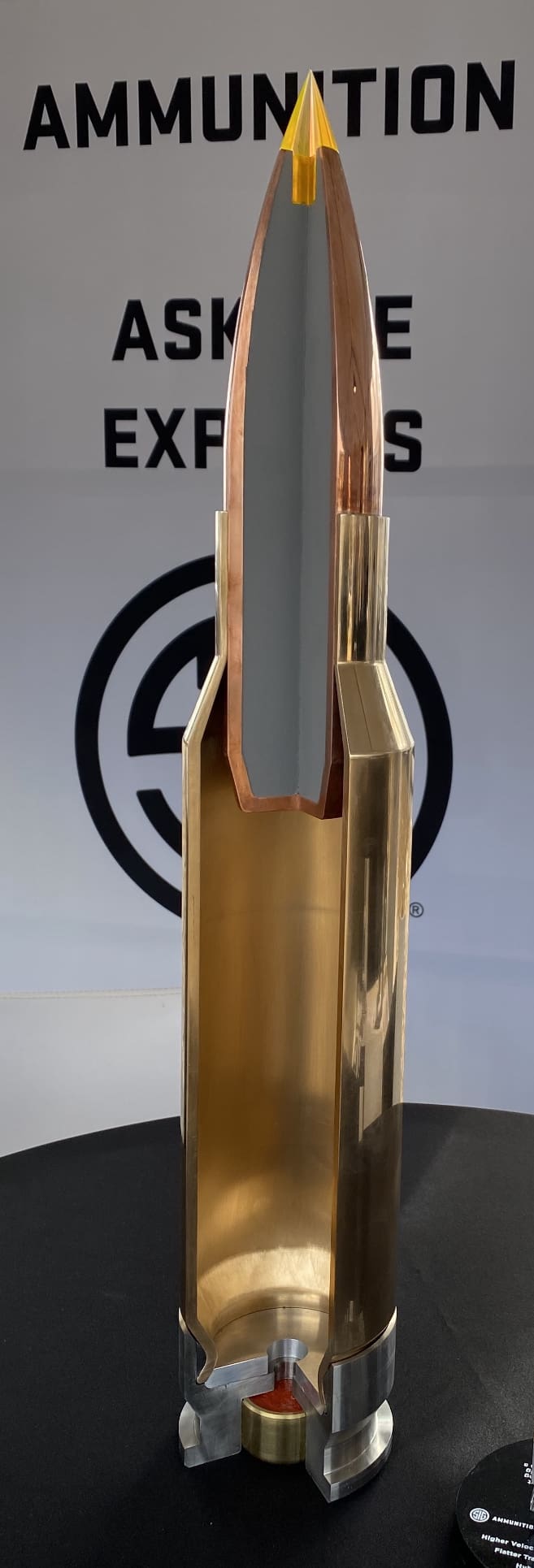
The hybrid design not only lowers weight compared to traditional all brass cased ammunition, but there are additional advantages as well. There is also more strength in the steel head where you need it, yet they retain the malleable brass case that works very well in the firing cycle. Forming the brass case body the way they do also means it is more uniform and they get an extra 200-300 feet per second muzzle velocity from the same load compared to conventional all brass case.
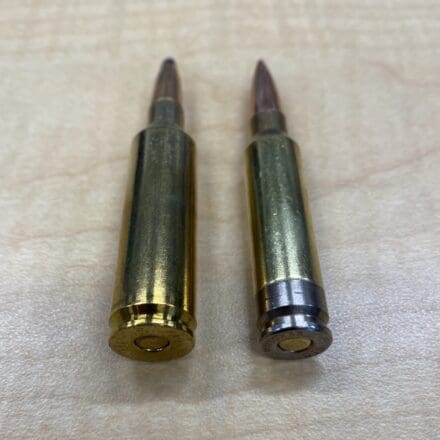
SIG Ammunition manufactures the hybrid case and complete round using the same types of machines used to manufacture all brass cased ammunition.
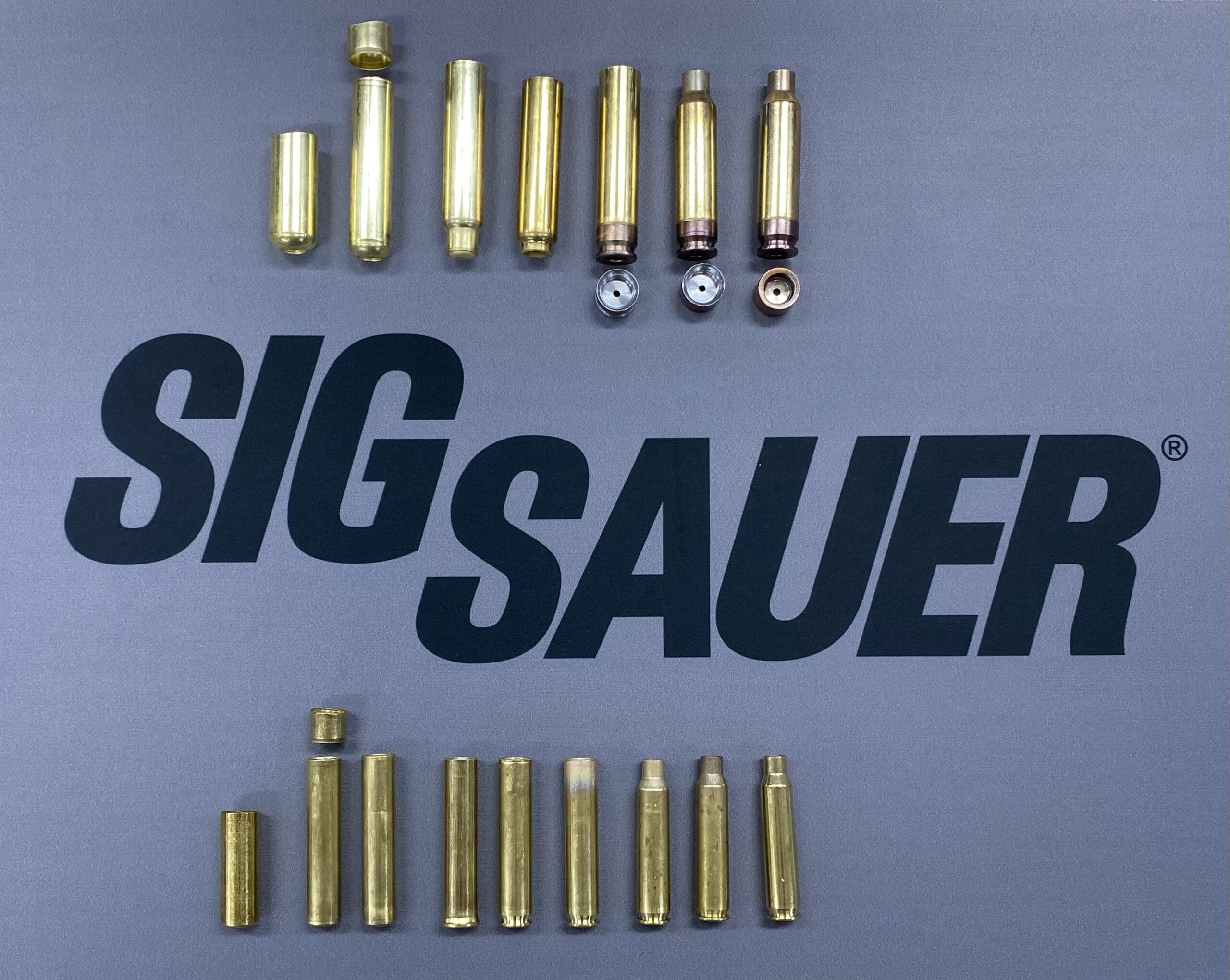
In this image you can see the processes to manufacture a conventional all brass 5.56mm case which is the lower set in the image.
1. Cup
2. Final Draw and Trim
3. Primer Pocket
4. Head Stamp
5. Pierce / Body Anneal
6. Taper
7. Mouth Anneal / Stress Relief
8. Polish / Final Inspect
With the hybrid case (upper set of cases), the steel head is manufactured separately and the case body and head are combined in a press. Otherwise, the processes are quite similar to conventional bass cased ammo.
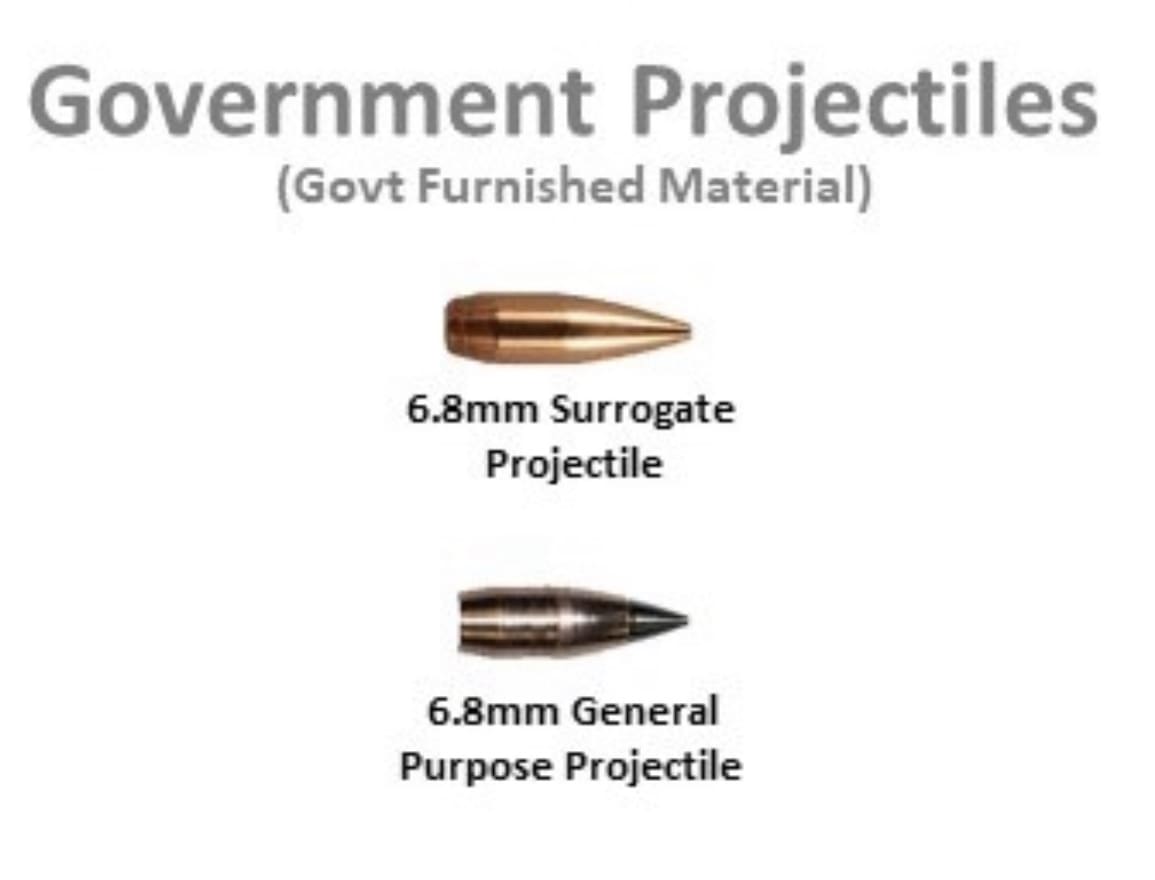
While SIG is working on their own primers, which are still a ways out, SIG uses commercial primers and propellants combined with government furnished projectiles to manufacture the 6.8x51mm next generation ammunition.
Commercial Applications
Never fear. While this ammunition was developed for NGSW, SIG is poised to offer a commercial version, called 277 SIG FURY.
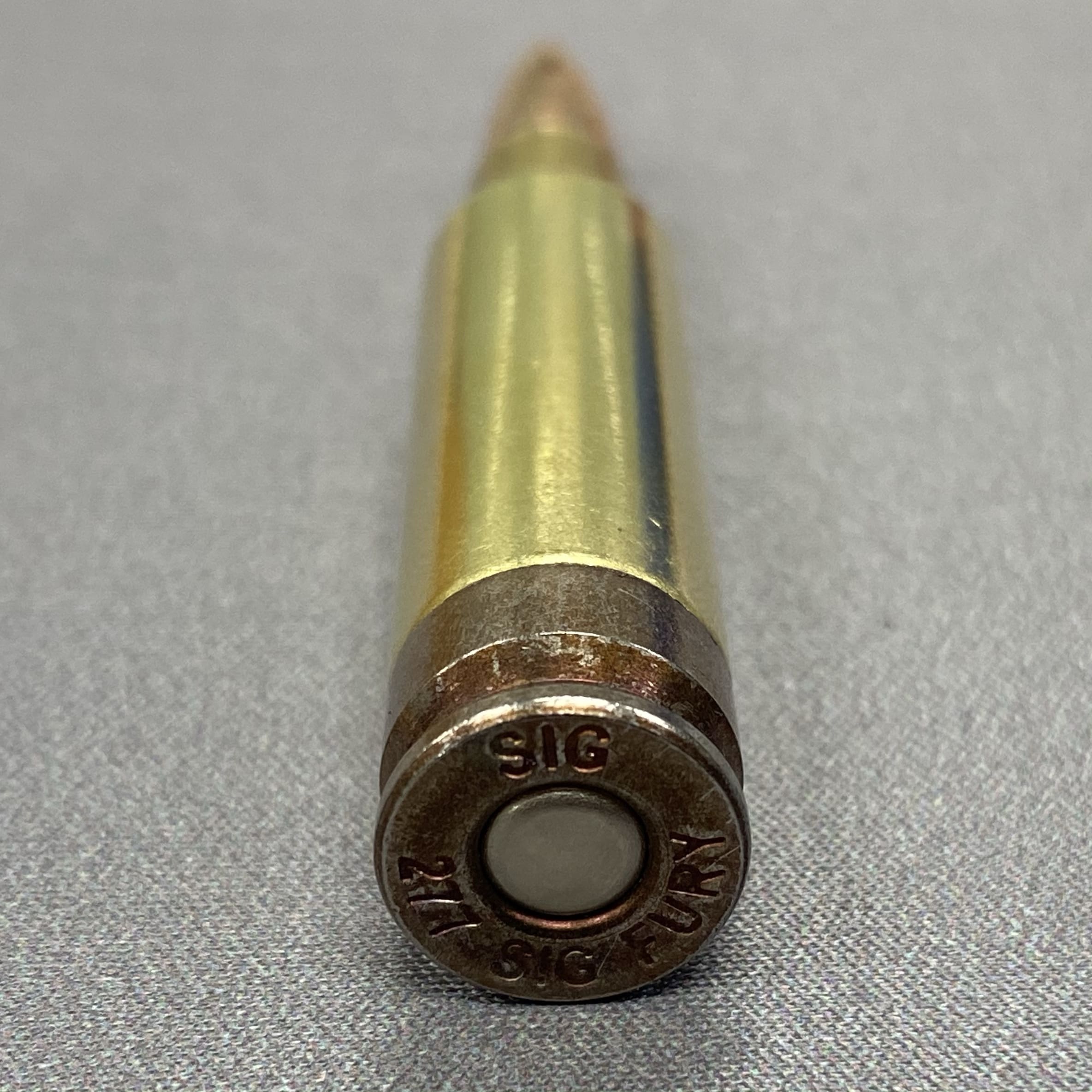
From the outset of the NGSW program SIG planned on offering this ammunition commercially to the consumer. During my visit Jason Imhoff, Director of Ammunition Engineering at SIG, related, “The thought of civilians not having access to a new military cartridge never even crossed my mind.”
They went through the process to introduce a new cartridge to the market, working with the Sporting Arms and Ammunition Manufacturers’ Institute (SAAMI) beginning in June 2019 when SIG submitted drawings and proof load information to the summer meeting.
Due to the round’s high chamber pressures, SIG had to work with SAAMI’s Technical Working Group to develop new certification procedures. Despite delays due to COVID, the Joint Technical Committee approved the Technical Data Package.
Initially, 277 SIG FURY will be offered as an option for the SIG Cross bolt action rifle. In fact, the Cross was developed using 277 SIG Fury proof loads. However, I wouldn’t be surprised to see the upcoming MCX Spear, a heavy variant of the MCX which they developed for NGSW, chambered in 277 SIG FURY offered for sale down the road.
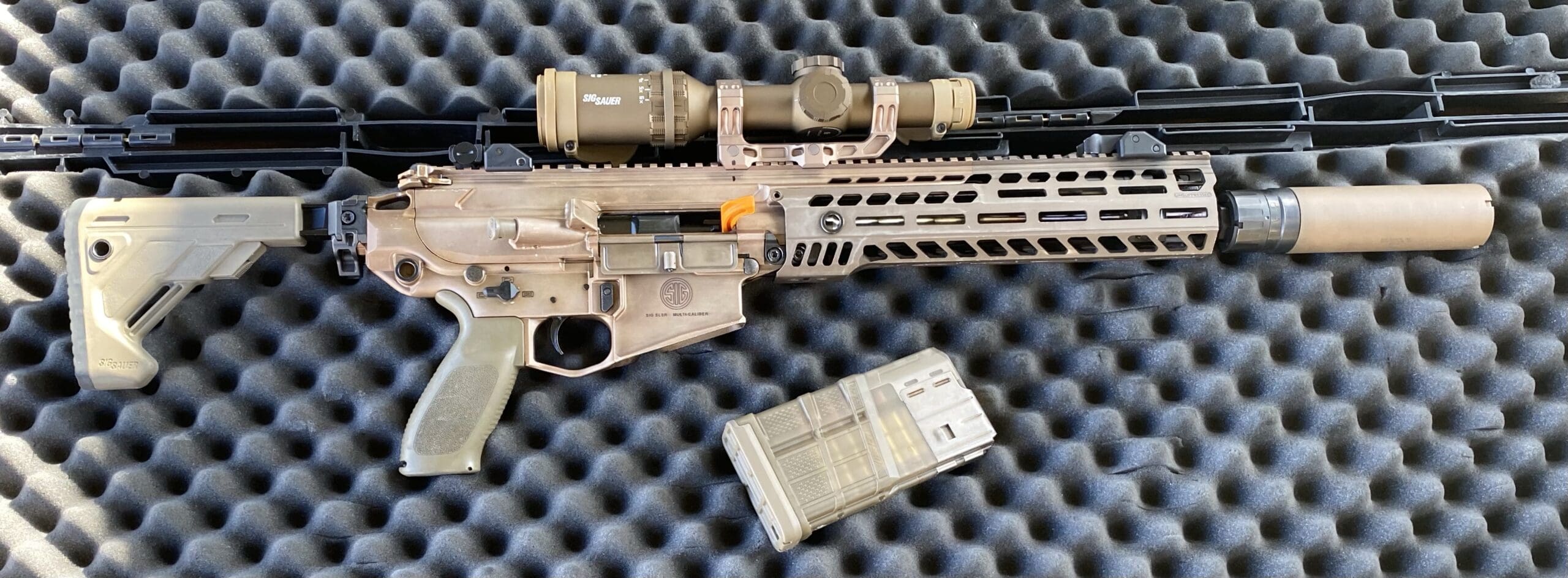
Jason Imhoff also told me that SIG doesn’t plan on stopping with the .277 variant. He foresees a 6.5 and possibly .308 versions of SIG FURY which utilize the hybrid case for higher velocities. Who knows where they’ll go after that.
The Way Ahead
Prototype Test #2 of the Next Generation Squad Weapons program has already begun and the Army will soon make a decision on which candidate system it wants to move forward with. Meanwhile, SIG will continue to refine their hybrid ammunition case technology and offer it to civilian and government customers alike.


